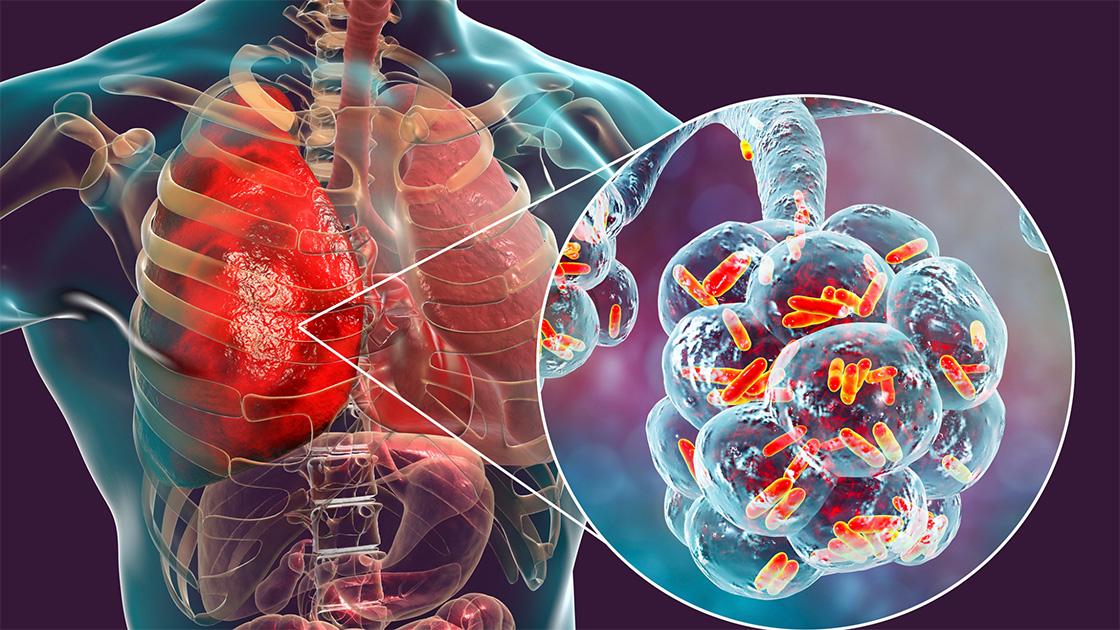Notifications

8 minutes, 25 seconds
-8 Views 0 Comments 0 Likes 0 Reviews

Lung infections are a significant health concern and can be caused by different types of pathogens, primarily viruses and bacteria. While both infections affect the respiratory system, their causes, symptoms, severity, and treatment approaches differ. Understanding these differences is crucial for early diagnosis, appropriate treatment, and effective management.
This article provides a detailed comparison between viral and bacterial lung infections, including their symptoms, diagnostic methods, treatment options, and the importance of having health insurance to cover medical costs.
Lung infections occur when harmful microorganisms enter the respiratory system, leading to inflammation, congestion, and difficulty breathing. These infections can range from mild colds and flu to severe pneumonia or bronchitis. The two most common types are:
Viral Lung Infections: Caused by viruses such as the influenza virus, respiratory syncytial virus (RSV), or coronavirus (COVID-19).
Bacterial Lung Infections: Caused by bacteria such as Streptococcus pneumoniae, Mycoplasma pneumoniae, and Haemophilus influenzae.
Both infections share some overlapping symptoms, but their progression, severity, and treatment methods differ significantly.
Below is a tabular representation of how viral lung infection varies from bacterial lung infection:
|
Factor |
Viral Lung Infection |
Bacterial Lung Infection |
|
Cause |
Viruses such as flu, RSV, COVID-19 |
Bacteria like Streptococcus pneumoniae, Mycoplasma pneumoniae |
|
Mode of Transmission |
Airborne droplets, contaminated surfaces |
Airborne droplets, close contact with infected individuals |
|
Onset of Symptoms |
Gradual onset, may start with cold-like symptoms |
Sudden onset, more severe |
|
Common Symptoms |
Fever, fatigue, sore throat, dry cough, runny nose, body aches |
High fever, productive cough (yellow/green mucus), chest pain, difficulty breathing |
|
Severity |
Usually mild but can become severe (e.g., viral pneumonia) |
Often more severe, leading to complications if untreated |
|
Treatment |
Symptomatic relief, antivirals in severe cases (e.g., Tamiflu for flu) |
Antibiotics required for bacterial eradication |
|
Duration |
7-14 days, self-limiting in most cases |
Can persist longer, requires medical intervention |
|
Complications |
Viral pneumonia, bronchitis, secondary bacterial infection |
Pneumonia, lung abscess, sepsis |
While both types of infections can lead to serious complications, bacterial lung infections generally require stronger medical intervention than viral infections.
Recognising the early symptoms of lung infection is crucial to determining whether a virus or bacteria is responsible.
Low to moderate fever
Dry cough or mild mucus production
Runny or stuffy nose
Sore throat and hoarseness
Muscle aches and fatigue
Mild shortness of breath
High fever (above 101°F or 38.5°C)
Persistent cough with thick mucus (yellow, green, or bloody)
Severe chest pain, especially while coughing
Shortness of breath or rapid breathing
Extreme fatigue and weakness
Loss of appetite or confusion (especially in older adults)
If you experience persistent fever, difficulty breathing, or severe chest pain, seek immediate medical attention, as bacterial infections can progress rapidly.
Since viral and bacterial lung infections share similar symptoms, medical tests are often required for accurate diagnosis. A doctor may use:
Physical Examination: Listening to lung sounds using a stethoscope
Chest X-ray: Helps differentiate between viral and bacterial pneumonia
Blood Tests: Checks for white blood cell count (WBC) to detect infection type
Sputum Culture: Identifies the presence of bacteria in lung secretions
PCR Tests or Nasal Swabs: Used to detect viral infections like influenza or COVID-19
Timely diagnosis is essential for receiving appropriate treatment and preventing complications.
Understanding the difference between viral and bacterial infections is crucial for determining the right course of treatment. While both types of infections can cause similar symptoms, their underlying causes and treatment approaches differ significantly. Viral infections, such as the flu or common cold, typically resolve on their own with supportive care, whereas bacterial infections, like pneumonia or strep throat, often require antibiotics for effective treatment.
Misuse of medications, especially antibiotics, can lead to resistance and complications, making accurate diagnosis and appropriate treatment essential. By recognising the distinctions between viral and bacterial infections, individuals can seek timely medical intervention and adopt the most effective treatment strategies for a faster and safer recovery.
Since viral infections do not respond to antibiotics, treatment focuses on symptom management and recovery support:
Rest and Hydration: Helps the body fight off the virus naturally
Over-the-Counter Medications: Pain relievers (paracetamol) for fever and body aches
Cough Syrups and Steam Therapy: Relieves congestion and sore throat
Antiviral Medications: Prescribed only in severe cases (e.g., oseltamivir for influenza)
Most viral lung infections resolve within 1-2 weeks without complications.
Bacterial infections require antibiotics for complete recovery. Treatment typically includes:
Antibiotics: Prescribed based on the type of bacteria (e.g., amoxicillin, azithromycin)
Hospitalisation (for Severe Cases): If pneumonia or sepsis develops
Oxygen Therapy: For patients experiencing severe breathing difficulties
Pain Relievers and Fever Control: To manage discomfort
Completing the full course of antibiotics as prescribed by a doctor is essential to prevent antibiotic resistance and recurrent infections.
Both viral and bacterial lung infections can be prevented with proper hygiene and healthcare measures.
Get Vaccinated: Influenza, pneumococcal, and COVID-19 vaccines help prevent infections
Practice Good Hand Hygiene: Wash hands regularly to avoid viral and bacterial transmission
Avoid Smoking and Polluted Areas: Smoking damages lung tissues, making infections worse
Wear a Mask in High-Risk Areas: Helps prevent the spread of airborne pathogens
Strengthen Immunity: Maintain a healthy diet, regular exercise, and good sleep habits
Recognising the differences between viral and bacterial lung infections is essential for early detection, accurate treatment, and better health outcomes. While viral infections often resolve with supportive care, bacterial infections may require timely medical intervention, including antibiotics. Preventive measures like vaccinations, maintaining good hygiene, and leading a healthy lifestyle can significantly lower the risk of severe lung infections.
Additionally, having a reliable health insurance plans, such as those offered by Niva Bupa Health Insurance, ensures access to quality medical care without financial worries. With the right protection in place, individuals can focus on recovery and overall well-being, knowing they are prepared for any health challenges that may arise.

